And the a suggestion about Rorschach Ink Blots. I think that is a pretty cool decorative technique!- its basicly the butterfly paintings you made in reception by folding wet painted paper over- except you can do it with watered down fabric paint.
This then got me on to wondering what the real ink blots are supposed to show- or even look like- yeah, we all know the first one- we've seen it on the virgin suicides- and about every other american teen movie going- I was surprised by the coloured ones- and by the interpretations too!
I'm clearly not normal as none of those were my 1st reactions!
I think that the cards show the following images-
I a mask
II Gnomes
III velocouraptors
IV a human figure lying down, viewed from the soles of the feet up
V a moth or winged insect
VI A signpost or maybe a church spire?
VII hares
VIII Iguanas
VIIII Trees
X The Eiffel tower
I also cannot remember is X represents 10 or 100. ah well, Based on my unusual responses, I doubt anyone was analysisng my roman numerals and more interested in my processing powers.
Although, in fairness, I guess sitting at home in a good mood planning a craft activity is not the normal situation for viewing the ink blots.
I'd be interested to know what other people make of them- although I guess with my rundown, and the commentary next to these images, it's probably going to influence peoples ideas!
I stole these from wikipedia...
| Card | Popular responses[64][65][66] | Comments[67][68] | ||||||
|---|---|---|---|---|---|---|---|---|
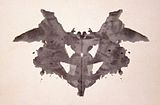 |
| When seeing card I, subjects often inquire on how they should proceed, and questions on what they are allowed to do with the card (e.g. turning it) are not very significant. Being the first card, it can provide clues about how subjects tackle a new and stressful task. It is not, however, a card that is usually difficult for the subject to handle, having readily available popular responses. | ||||||
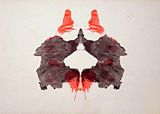 |
| The red details of card II are often seen as blood, and are the most distinctive features. Responses to them can provide indications about how a subject is likely to manage feelings of anger or physical harm. This card can induce a variety of sexual responses. | ||||||
 |
| Card III is typically perceived to contain two humans involved in some interaction, and may provide information about how the subject relates with other people (specifically, response latency may reveal struggling social interactions). | ||||||
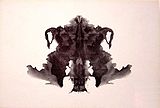 |
| Card IV is notable for its dark color and its shading (posing difficulties for depressed subjects), and is generally perceived as a big and sometimes threatening figure; compounded with the common impression of the subject being in an inferior position ("looking up") to it, this serves to elicit a sense of authority. The human or animal content seen in the card is almost invariably classified as male rather than female, and the qualities expressed by the subject may indicate attitudes toward men and authority. Because of this Card IV is often called "The Father Card".[69] | ||||||
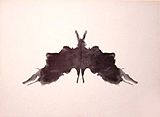 |
| Card V is an easily elaborated card that is not usually perceived as threatening, and typically instigates a "change of pace" in the test, after the previous more challenging cards. Containing few features that generate concerns or complicate the elaboration, it is the easiest blot to generate a good quality response about. | ||||||
 |
| Texture is the dominant characteristic of card VI, which often elicits association related to interpersonal closeness; it is specifically a "sex card", its likely sexual percepts being reported more frequently than in any other card, even though other cards have a greater variety of commonly seen sexual contents. | ||||||
 |
| Card VII can be associated with femininity (the human figures commonly seen in it being described as women or children), and function as a "mother card", where difficulties in responding may be related to concerns with the female figures in the subject's life. The center detail is relatively often (though not popularly) identified as a vagina, which makes this card also relate to feminine sexuality in particular. | ||||||
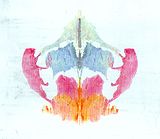 |
| People often express relief about card VIII, which lets them relax and respond effectively. Similar to card V, it represents a "change of pace"; however, the card introduces new elaboration difficulties, being complex and the first multi-colored card in the set. Therefore, people who find processing complex situations or emotional stimuli distressing or difficult may be uncomfortable with this card. | ||||||
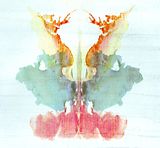 |
| Characteristic of card IX is indistinct form and diffuse, muted chromatic features, creating a general vagueness. There is only one popular response, and it is the least frequent of all cards. Having difficulty with processing this card may indicate trouble dealing with unstructured data, but aside from this there are few particular "pulls" typical of this card. | ||||||
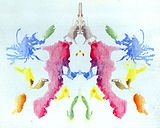 |
| Card X is structurally similar to card VIII, but its uncertainty and complexity are reminiscent of card IX: people who find it difficult to deal with many concurrent stimuli may not particularly like this otherwise pleasant card. Being the last card, it may provide an opportunity for the subject to "sign out" by indicating what they feel their situation is like, or what they desire to know. |
No comments:
Post a Comment